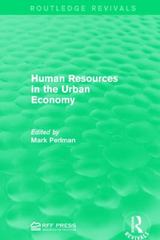fulll explanation on all questins..... its a complete questiojn
upgrade its equipment from chainsaws to timber harvesters, which are large pieces of equipment Question Confidence that require a new set of skills. The company was unwilling to train existing workers on the new I'm pretty sure... equipment, so Njal needed to find another source of income. You can pain or lose up to 40 points on this question. Match the scenarios Njal goes through on his way from one job to the next with the relevant economic terms. Activity Score Drag each item on the left to its matching item on the right. Note that every item may not have a match, while some items may have more than one match. 190 When Njal's company upgrades its operations, it will no longer employ chainsaw operators like Njal, Njal is not Current Grade trained to do what the company needs, so 0% he is laid off. You must answer at least 3 more questions to receive a grade After looking for work for several months, Question Help/Challenge Njal cannot find work for a chainsaw operator, so he stops looking for three frictional unemployment months. not in the labor force Njal signs up for a six-month government program that will train him to be a employed part-time for economic reasons computer-repair specialist. (counted as part of U-6 unemployment) structural unemployment After completing the training program, Njal looks for work as a computer-repair part of the labor force* specialist, but no one will hire him since heWhen Njal's company upgrades its operations, it will no longer employ chainsaw operators like Njal. Njal is not trained to do what the company needs, so he is laid off. After looking for work for several months, Njal cannot find work for a chainsaw operator, so he stops looking for three frictional unemployment months. not in the labor force Njal signs up for a six-month government employed part-time for economic reasons program that will train him to be a (counted as part of U-6 unemployment) computer-repair specialist. structural unemployment* After completing the training program, Njal looks for work as a computer-repair part of the labor force* specialist, but no one will hire him since he is an older worker and has no experience. Njal takes a part-time job with a computer- repair service to gain experience until he can find a full-time job. Njal starts his own computer-repair company, and eventually has enough work to hire an assistant.4. Human Capital Accumulation Consider our basic, two-period model of Human Capital Accumulation. That is, the individual is born with some level of human capital, Hi, and must decide in each period t = 1,2 what fraction of time they should invest in human capital accumulation 0 0, 0 0: (a) The capital-to-labor ratio. (b) Output per worker. (c) Growth during the transition phase. (d) Long-term economic growth.MORE EXERCISES 1. Transition dynamics: What is the principle of transition dynamics in the com- bined Solow-Romer model? 2. Long-run growth: Growth in the combined Solow-Romer model is faster than growth in the Romer model. In what sense is this true? Why is it true? 3. Balanced growth: Suppose we observe the following growth rates in various economies. Discuss whether or not each economy is on its balanced growth path. (a) A European economy: gy/L = 0.03, gKIL = 0.03. (b) A Latin American economy: gy/L = 0.02, gKIL = 0.01. (c) An Asian economy: gy/L = 0.06, gKIL = 0.15. 4. Transition dynamics in the combined Solow-Romer model: Consider the com- bined model studied in this appendix. Suppose the economy begins on a bal- anced growth path in the year 2000. Then in 2030, the depreciation rate d rises permanently to the higher level d'. (a) Graph the behavior of output per person over time, using a ratio scale. (b) Explain what happens to the growth rate of output per person over time and why. 5. The combined Romer-Solow model (1): Make one change to the basic combined model that we studied in this appendix: let the production function for output












